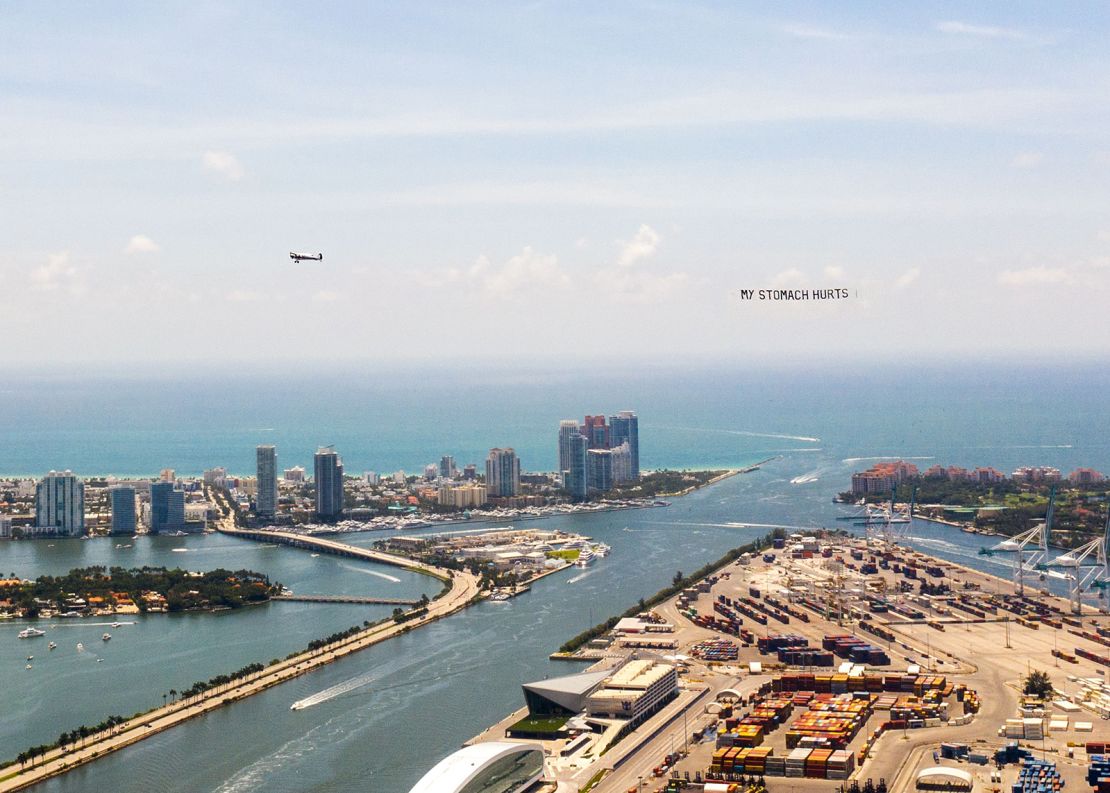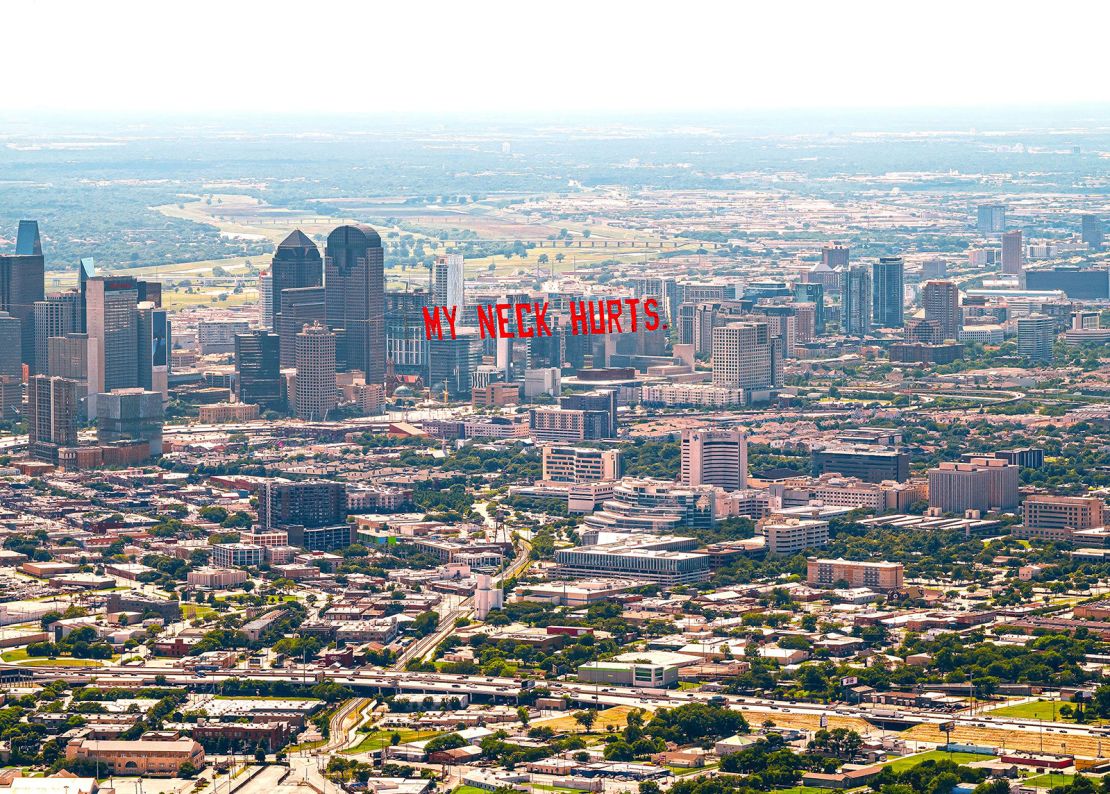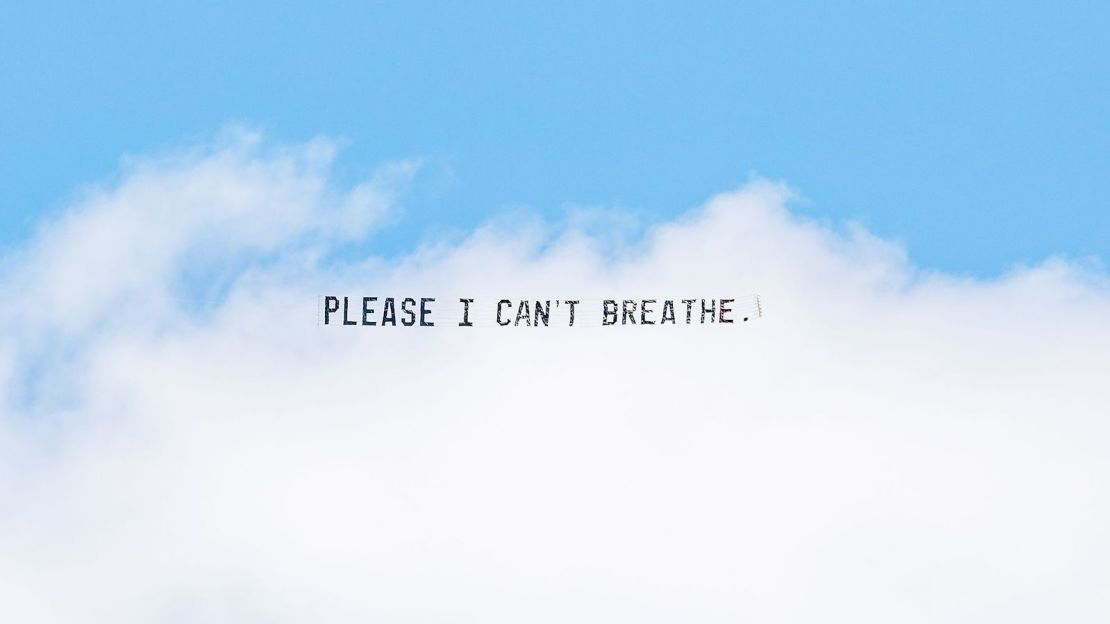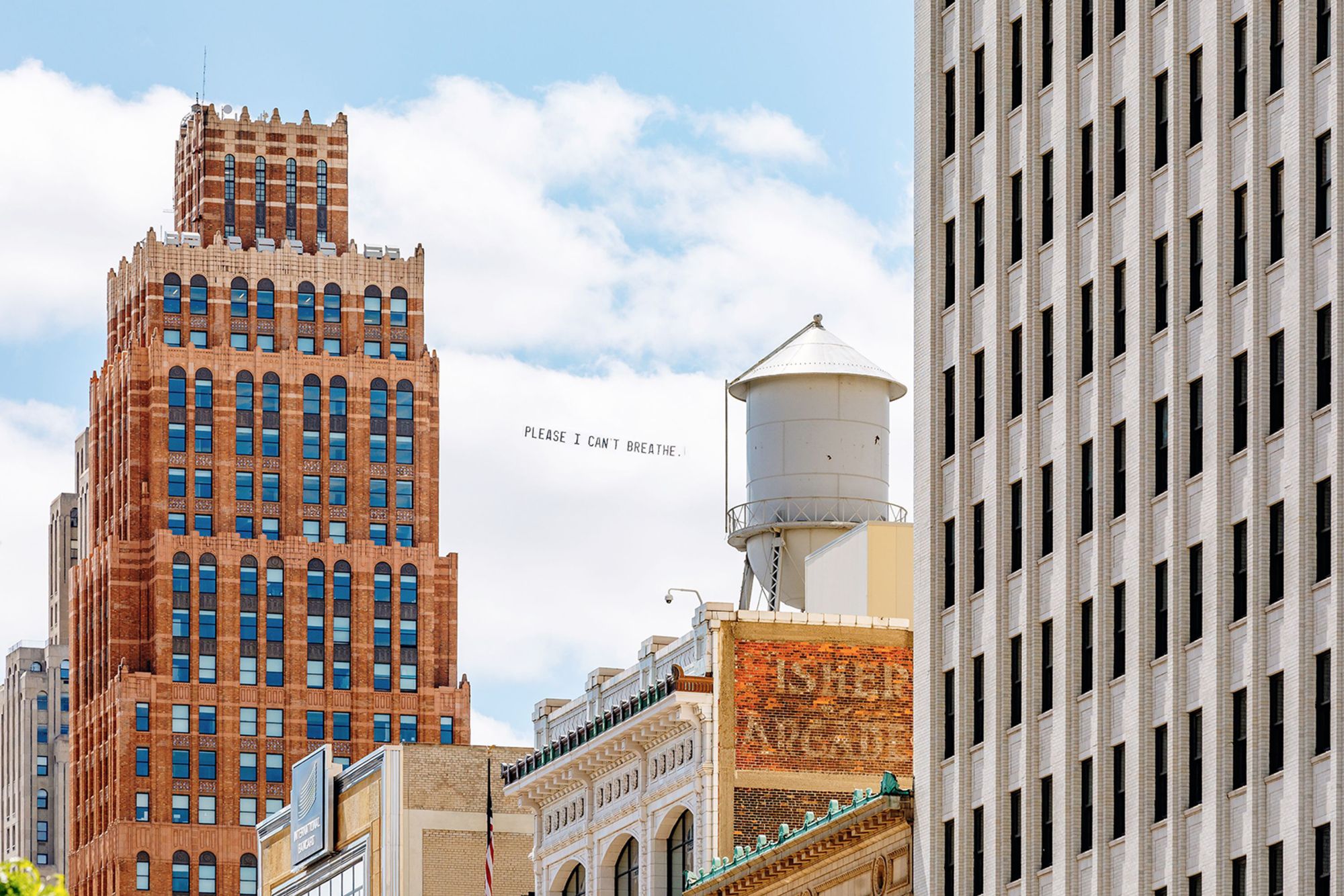The final words of George Floyd, the African American man who died after being restrained by a Minneapolis police officer, have become powerful slogans for protesters in the US.
As demonstrations against police brutality have spread through the country and the world, Dallas-based artist Jammie Holmes found a new way to immortalize Floyd’s cries for help: sending them across the skies of five major cities.
Over the weekend, banners reading “Please I can’t breathe” and “They’re going to kill me” were seen trailing airplanes above Detroit and New York City respectively. The other three, flown across Los Angeles, Miami and Dallas, read “My stomach hurts,” “My neck hurts” and “Everything hurts” – words heard in a video filmed by a bystander and widely circulated on social media.

Floyd was pronounced dead shortly after his arrest last Monday. Plolice officer Derek Chauvin was seen kneeling on Floyd’s neck for more than eight minutes, despite his pleas of “I can’t breathe.” All four officers involved in the incident have been fired from the Minneapolis Police Department, while Chauvin now faces charges of third-degree murder and second-degree manslaughter.
In a press release, the artist said his elaborate project was inspired by “a need for unity and the understanding that what happened to George Floyd is happening all over America.”
“Our mothers are burying us way too early,” Holmes added. “My fiancée shouldn’t worry every time I’m headed out of the house on my own. Yes, I carry a pistol, Mr. Officer. I carry it to protect myself from you by any means necessary. At some point, you will realize you can’t kill us all.”

Opposing a ‘culture of fear’
Hailing from Thibodaux, Louisiana, Holmes is best known as a painter. His art often depicts the everyday lives of black communities in the American South, while exploring the legacy of poverty and racism in shaping the area’s past. Holmes says that he, too, has been the victim of unspecified police misconduct on multiple occasions.
Posting on his website, the artist described a “culture of fear and hateful discrimination” in the US that had “increased in its intensity since 2018.” Holmes, who arranged the flying banners with the support of Detroit’s Library Street Collective, described the work as an “act of social conscience and protest” that were intended “to bring people together in their shared incense at the inhumane treatment of American citizens.”
He also used the post to explain his decision to switch his usual canvases for aerial ones.
“The use of sky media to recount Floyd’s final words presents a contrast to the noise of digital media and employs a form of communication that is most often used by the privileged to announce sporting events, marriage proposals or promote consumption,” the post read. “It is rarely used for political or social purposes – to exercise free speech – because it is an outlet unavailable to the poor and marginalized.


“I hope that people will be reminded of the power we can have to be heard and that coming together behind a unified message is key for real change,” he added.
As well as igniting protests, which have raged for nearly a week, Floyd’s death has inspired artists across the world. Public artworks have appeared in streets far afield as Syria and Spain, with many of them referencing the phrase “I can’t breathe.”
From Minneapolis to Berlin to Idlib Province in Syria, people are making public artworks to remember George Floyd, Breonna Taylor and Ahmaud Arbery
Minnesota artist Cadex Herrera, who contributed to a street mural at the intersection where Floyd was arrested, described art as a kind of “therapy” for communities affected by tragedy.
“Art can say things you cannot express with words,” he said over email. “It brings the community together to reflect, to grieve, for strength and for support.”
Top image: A banner reading “Please I can’t breathe” flies above downtown Detroit.















